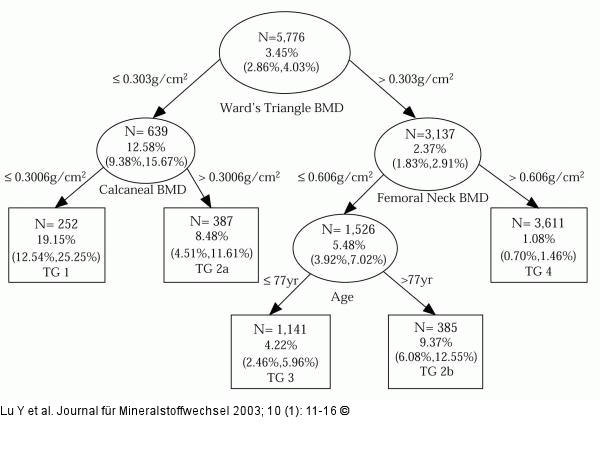Lu Y, Black D, Genant HK, Mathur AK, The SOP Research Group Study of Hip Fracture Risk using Tree Structured Survival Analysis Journal für Mineralstoffwechsel & Muskuloskelettale Erkrankungen 2003; 10 (1): 11-16 Volltext (PDF) Summary Übersicht
| ||||||||||
Abbildung 1: Hüftfrakturen - Tree Structured Survival Analysis The Tree Structured Survival Analysis Using Age and AII BMD Variables (Model 1). The variables, corresponding cut-off points for splitting, number of subjects in each resulting subgroup, and the corresponding probability of hip fracture in a 6.5 year follow up period. Terminal groups TG2a and TG2b were combined due to their similar survival profiles. |

Abbildung 1: Hüftfrakturen - Tree Structured Survival Analysis
The Tree Structured Survival Analysis Using Age and AII BMD Variables (Model 1). The variables, corresponding cut-off points for splitting, number of subjects in each resulting subgroup, and the corresponding probability of hip fracture in a 6.5 year follow up period. Terminal groups TG2a and TG2b were combined due to their similar survival profiles. |





